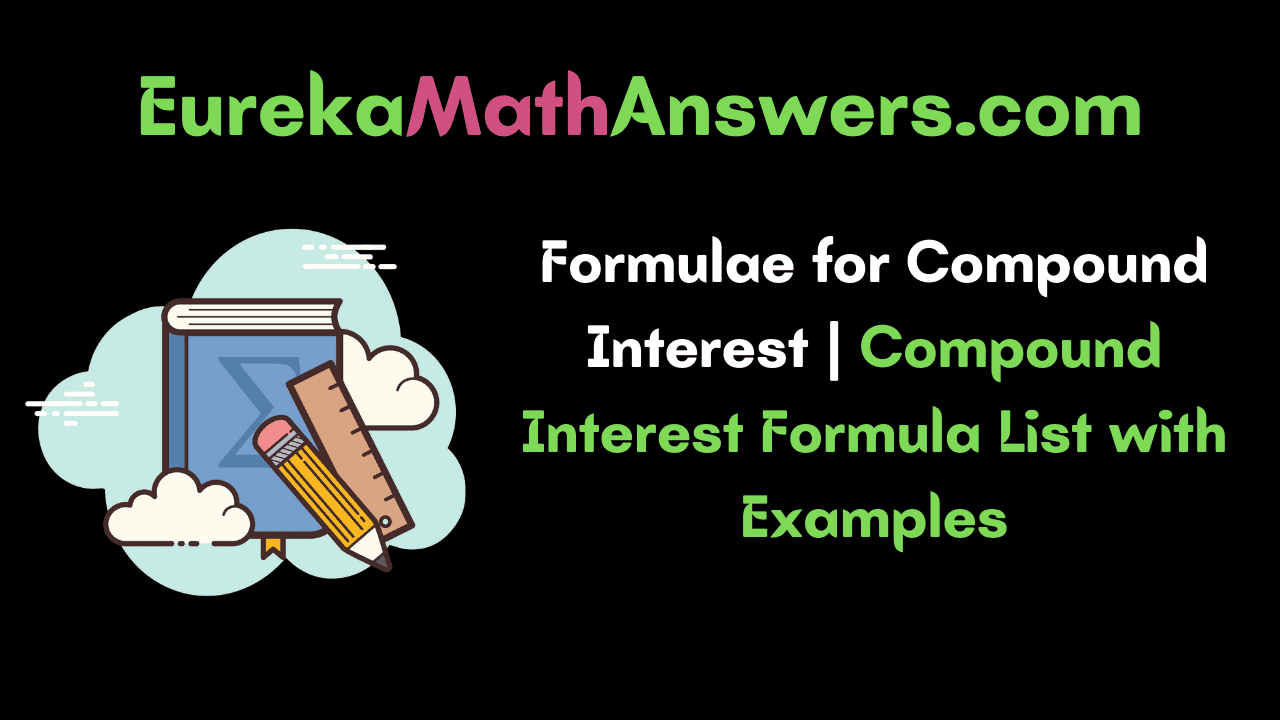In our earlier articles, we have discussed what is compound interest. Here in this article, we will let you know the formulae for the calculation of compound interest. For your knowledge, we have outlined the various formulae involved in finding the Compound Interest. Also, go through the solved examples on the calculation of compound interest and the amount payable at the principal sum.
Compound Interest Formulas
Below is the list of Compound Interest Formula for different cases. Use them as and when you need them and make the most out of them. They are along the lines
Let us consider the principal sum as ‘P’ i.e. amount taken as loan.
R is the rate of interest for which the principal amount is lent.
T is the Time Duration in which you need to repay the amount.
A is the amount to be paid.
- Formula for Compound Interest Yearly Formula A = P(1+R/100)T
- Formula for Compound Interest Half-Yearly A = P(1+(R/2)/100)2T
- Formula for Compound Interest Quarterly A = P(1+(R/4)/100)4T
- Formula for Compound Interest with Monthly Contributions A = P(1+(R/12)/100)12T
- When Time is in Fraction A = P(1+R/100)2(1+(R/5)/100)
- If the rate of interest in 1st year, 2nd year, 3rd year,…, nth year are R1%, R2%, R3%,…, Rn% respectively then A = P(1+R1/100)(1+R2/100)(1+R3/100)…(1+Rn/100)
- Present Worth of Rs. X due n years is given by the formula Present Worth = \(\)\frac{1}{1+R/100}[\latex]
Since we are aware of the logic interest is the difference between Amount and Principal i.e. Interest = Amount – Principal
See More:
Solved Examples on Compound Interest
Example 1.
A man borrowed $30,000 from a bank at the interest of 5% p.a. compounded annually for 2 years. Calculate the compound amount and interest?
Solution:
Given Interest rate = 5%
Principal amount = $30,000
Time = 2 years
Total interest = ?
Amount = ?
We know that A = P(1+R/100)T
So, A = 30,000(1+5/100)3
= 30,000(1+0.05)3
= $34728.75
Interest = $34728.75 – $30,000
= $4728.75
Example 2.
If the interest rates for 1st, 2nd, and 3rd are 4%, 8%, and 12% respectively on a sum of $10,000. Then calculate the amount after 3 years?
Solution:
R1 = 4%
R2 = 8%
R3 = 12%
P = $10,000
We know the formula to calculate Amount A = P(1+R1/100)(1+R2/100)(1+R3/100)…(1+Rn/100)
Substituting the input values in the above formula we have
A = $10,000(1+4/100)(1+8/100)(1+12/100)
=$10,000(1+0.04)(1+0.08)(1+0.12)
=$10,000(1.04)(1.08)(1.12)
=$12579.84
Example 3.
Find the compound interest on the amount of $1,00,000 invested at 4% per annum, compounded quarterly for 3 years?
Solution:
Given Interest rate = 4%
Principal amount = $1,00,000
Time = 3 years
Total interest =?
Amount = ?
We know that A = P(1+(R/4)/100)4T
So, A = $1,00,000(1+(4/4)/100)4
= $1,00,000(1+0.01)4
= $104060.401
Interest = $104060.401 – $1,00,000
= $4060.401
Example 4.
Find the compound amount of $25,000 if the interest rate is 7% per annum compounded monthly for 2 years. Also, calculate the compound interest?
Solution:
Given Interest rate = 7%
Principal amount = $25,000
Time = 2 years
Total interest =?
Amount = ?
We know that A = P(1+(R/12)/100)12T
So, A = $25,000(1+(7/12)/100)12.2
= $25,000(1+0.005833333)24
= $28,745.15
Interest = $28,745.15 – $25,000
= $3745.15
